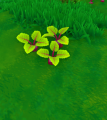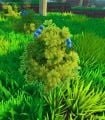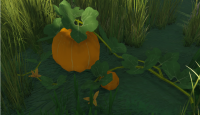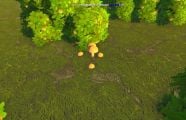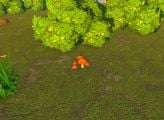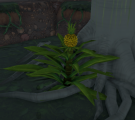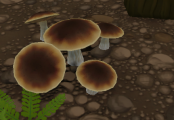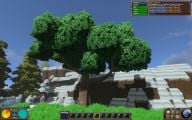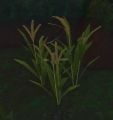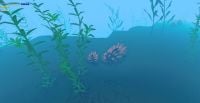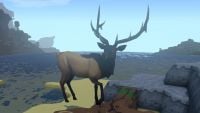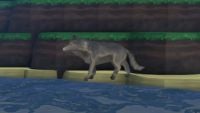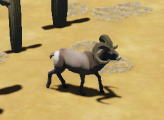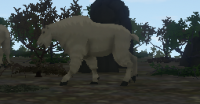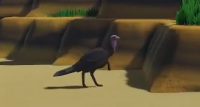Food: Difference between revisions
| [checked revision] | [checked revision] |
No edit summary Tag: 2017 source edit |
No edit summary Tag: 2017 source edit |
||
| Line 56: | Line 56: | ||
Here are a few examples of plants that require a certain tool to harvest: | Here are a few examples of plants that require a certain tool to harvest: | ||
* [[Wheat]], Agave and [[Fireweed Shoots]] require a [[scythe]]. | * [[Wheat]], Agave and [[Fireweed Shoots]] require a [[Tools#Scythe/Sickle|scythe]]. | ||
* [[Camas Bulb]] and [[Taro Root]] require a [[Tools#Shovel|shovel]]. | * [[Camas Bulb]] and [[Taro Root]] require a [[Tools#Shovel|shovel]]. | ||
* [[Acorn]] is harvested from the debris of an [[Oak|Oak Tree]], which requires an [[Tools#Axe|Axe]] to chop down. It is only used in the cooking of [[Phad Thai]]. | * [[Acorn]] is harvested from the debris of an [[Oak|Oak Tree]], which requires an [[Tools#Axe|Axe]] to chop down. It is only used in the cooking of [[Phad Thai]]. | ||
Revision as of 15:13, 3 July 2024
Food is a constant necessity for players in Eco. Lack of food will eventually halt the accumulation of Skill Points and prevent the player from doing any work that requires calories. However, players can not die from starvation.
Skill point gain is increased by the player's nutrition and Housing. Nutrition is raised by eating more nutritious food while balancing the four nutrients: Carbohydrates, Protein, Fat and Vitamins.
Food is eaten by right-clicking on it. It does not need to be assigned to the toolbar. Food can be eaten from the toolbar, the inventory, or directly from a container. Right-clicking a stack of food will only consume one portion.
Food and Skill Points
A player's daily skill point gain is calculated based on the average nutrients of all foods in a player's stomach, along with housing quality. The average (weighted based on food calories) of each nutrient is added, then multiplied by a balance modifier (between x0.5 and x2). Foods that are completely lacking in one or more nutrients are considered to have a value of 0 in the missing nutrient(s).
Foods stay in the stomach for 24 hours after eating. After that time, they will cease to be part of the skill point gain calculation and history of eaten foods.
Every player has their own taste profile - they may love or hate any food item, even if it is unusual to eat (see Amanita). Depending on the average appreciation % of foods eaten within the past 24 hours, a player may gain or lose up to a 20% addition/removal to their food-related skill point multiplier. Additionally, the usual Bread icon may occasionally change into a loved food item, indicating a Craving of that item. Cravings do not create any debuff, but satisfying them grants a 10% bonus per craving. Only 1 Craving can exist at once, but 3 Cravings can be satisfied at once to provide a substantial 30% food bonus. These Cravings both satisfied and unmet disappear over time.
Properties of food
Consumption of an item under the food category will provide the player with the following values:
Calories
When a food item is consumed, its caloric value is added to the player's calorie value (shown as a pie chart on the bottom left of the screen). These calories are needed to do any type of manual labor in ECO such as using tools or running.
Time will slowly convert the calories into skill points. Once the player's calories reach 0, the player's daily skill point gain will also drop to 0 and they will be unable to complete any work that requires calories.
If the player's calories are above maximum, the player will be unable to eat any additional food and will be shown the "My stomach is full" message. The player will need to complete some manual labor in order to be able to eat additional food items. The calorie maximum defaults to 3,000, but that can be increased by investing in the skill Big Stomach.
Nutrients
The four nutrients do not have any specific effects on the body individually, however the player can maximize their skill gain when maintaining a balanced diet. A balanced diet contains an even amount of the four categories below:
Carbs
Carbs (short for carbohydrates) are mainly found in starchy products like Bread and other baked goods. In early-game, Wheat should be used to produce items that are high in Carbs.
Protein
Protein is mainly found in meat-focused foods, but small amounts can also be found in Beans and other vegetarian items. Charred Meat is a good source of protein in early-game, but dominant in fat.
Fat
Fat is found by cooking other ingredients in Tallow (a byproduct of cooking 3 Raw Meat) or Oil (a byproduct of milling 12 Cereal Germ or by cooking 18 Tallow over a stove). Camas Bulbs and its' recipes are noticeably fatty.
Vitamins
Vitamins are found in foods rich in vegetables or fruits. Huckleberries are the best way to supplement vitamin intake early on.
Food Crafting Stations & Recipes
The following crafting stations are used for crafting food:
- Campfire - The most basic of cooking stations, anyone can use it, but only skilled Campfire Cooks can create dishes.
- Butchery Table - Used throughout the entire game, using Carcasses to create Raw Meat and leathers, as well as refining meat into primordial products such as Raw Roasts and Raw Sausages.
- Bakery Oven - An alternative to Cooking, Baking involves baking produce to make acceptable meals, or meat and Milling products to create very nutritious meals such as Bread, desired by all.
- Mill - Almost exclusively mills ingredients, all edible and a few useless, like Acorn Powder.
- Kitchen - Advanced Cooking allows the creation of the very best food items in the game, but often has unaffordable prices for its' recipes.
- Cast Iron Stove - Cooking, as a direct upgrade from simple meals at a Campfire, yields a great variety of higher quality dishes.
- Stove - Advanced Cooking, used alongside the Kitchen.
Food Resources
Plants
Food-bearing plants are a food resource harvested from the world. Most can be harvesting simply by highlighting the plant and pressing E.
Currently, some are very plentiful, so growing plants such as Papayas is not recommended as any player can simply harvest a few hundred within minutes.
Here are a few examples of plants that require a certain tool to harvest:
- Wheat, Agave and Fireweed Shoots require a scythe.
- Camas Bulb and Taro Root require a shovel.
- Acorn is harvested from the debris of an Oak Tree, which requires an Axe to chop down. It is only used in the cooking of Phad Thai.
- Food-bearing Plants
-
Corn - Grows in Grasslands.
-
Ferns - Grows in Cold Forest, especially Warm Forest
-
Beans - Grows in Cold forests. Rare in Beta 8.0
-
Wheat - Grows in Grasslands.
-
Camas - Grows in Warm Forest.
-
Prickly Pear - Grows in Deserts.
-
Tomatoes Grows plentifully in Grasslands.
-
Amanita Mushroom - Appears within Wetlands plentifully. Removes Calories, but any Cook can use them as any other mushroom.
-
Papaya - Grows plentifully in Rainforest.
-
Pineapple - Grows in Rainforest
-
Acorns - Harvested from Oak Tree leaves and debris. Can also be used as seed.
-
Urchin - Grows underwater. Counts as a plant.
-
Clam - Grows underwater. Counts as a plant.
Animals
Animals are a food resource that requires the player to kill the animal with a Bow, harvest the carcass, and then prepare the carcass at a Butchery Table or Fishery.
Clams and Urchins require the player to harvest by diving (holding the Left Ctrl key on the keyboard) and then shucking/cleaning them at a Fishery in order to obtain Raw Fish.
- Animals
-
Bison - Largest animal available, in a class of its' own, making it vulnerable to extinction.
-
Elk - Medium
-
Wolf - Medium
-
Fox - Medium
-
Hare - Small
-
Bighorn Sheep - Medium
-
Tortoise - Small
-
Trout - Medium fish
-
Salmon - Small fish
-
Mountain Goat - Medium
-
Turkey - Small
Guides
Best Food Combos — By Rupi
